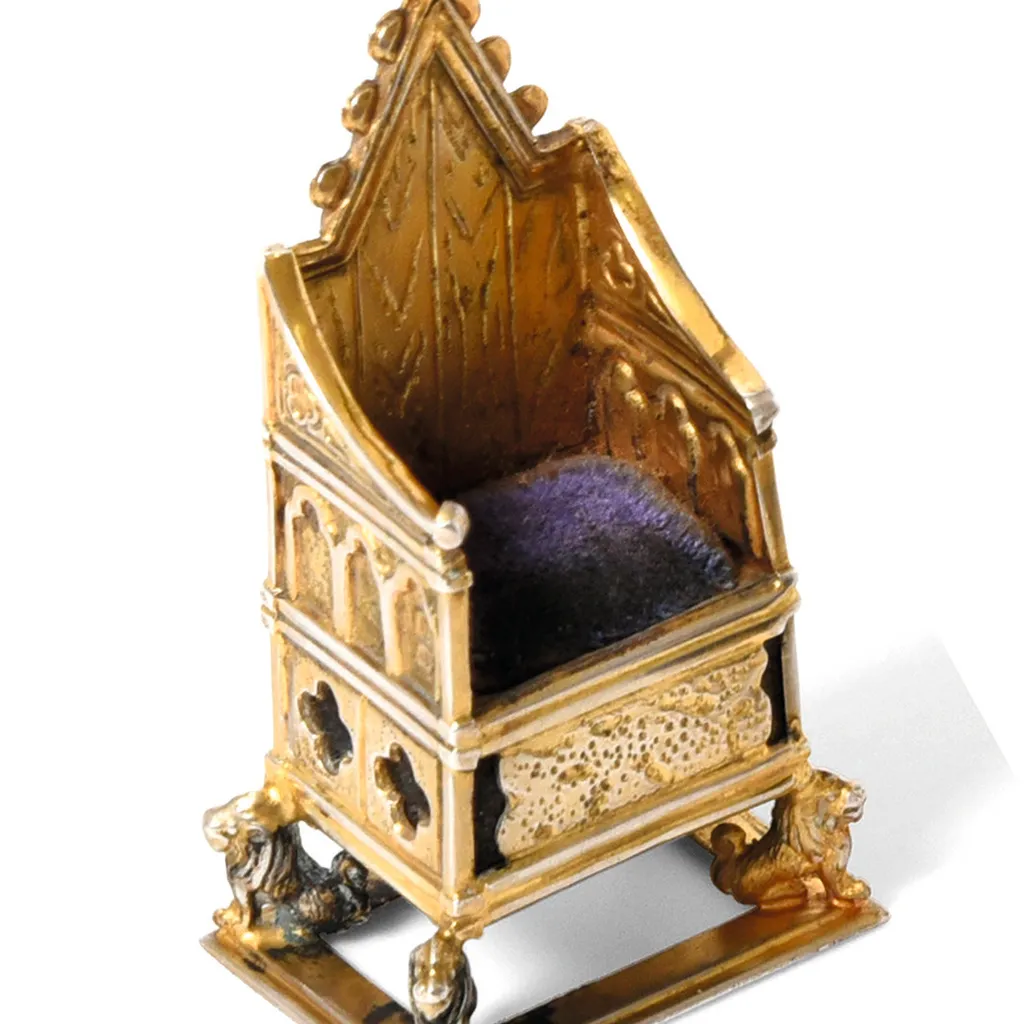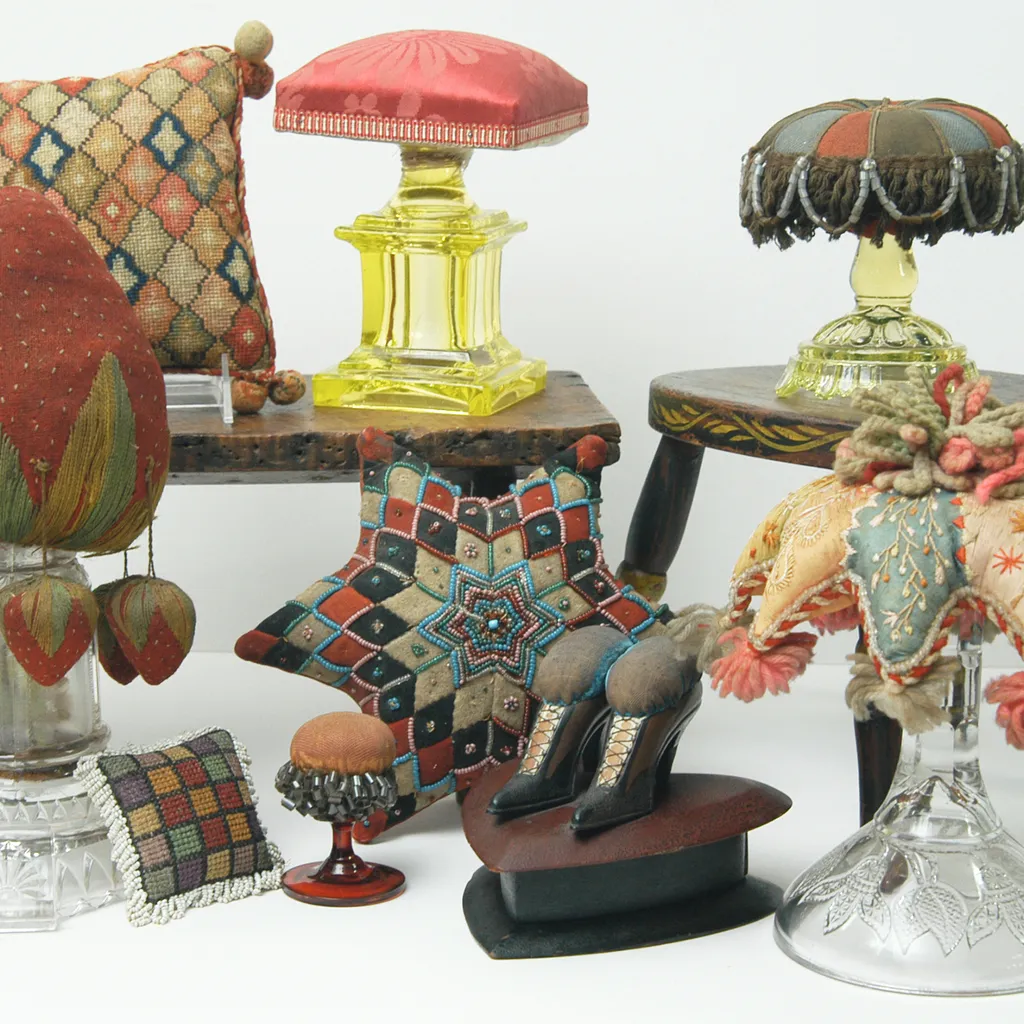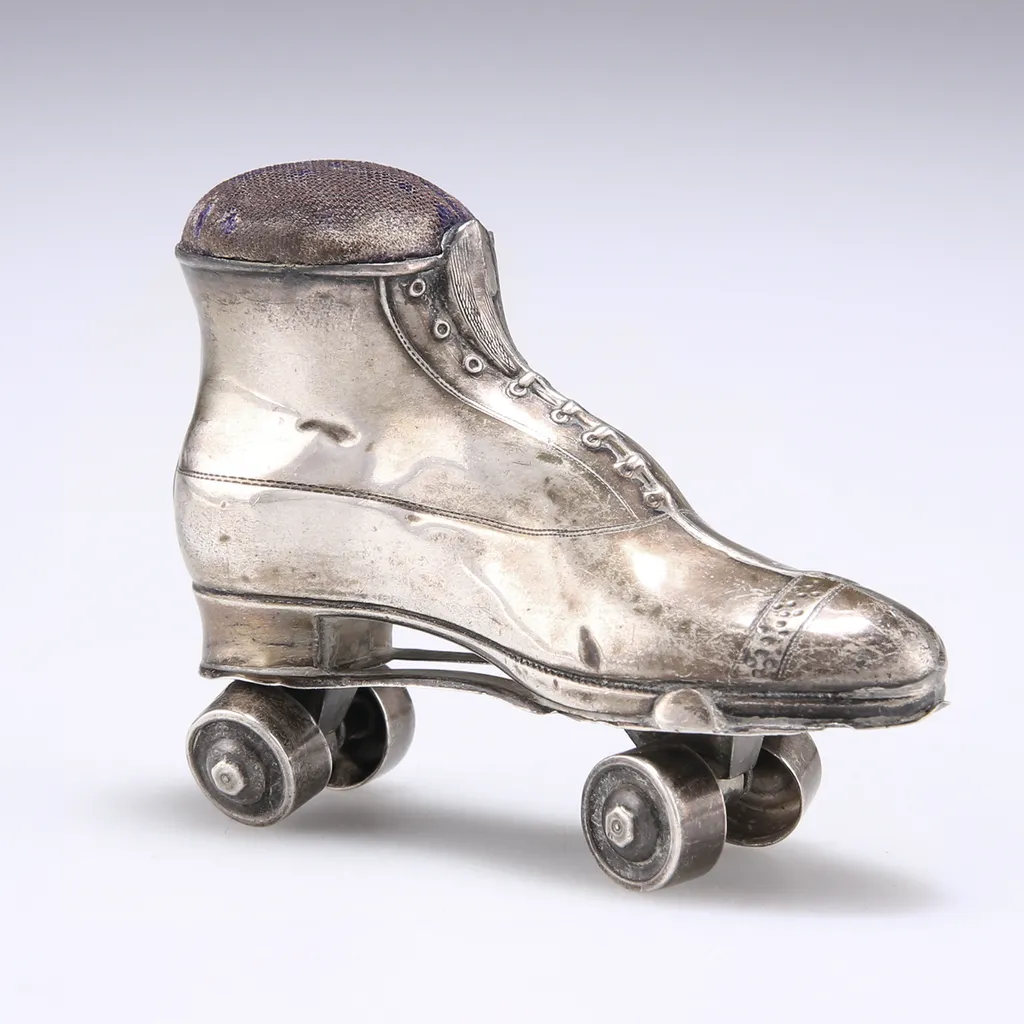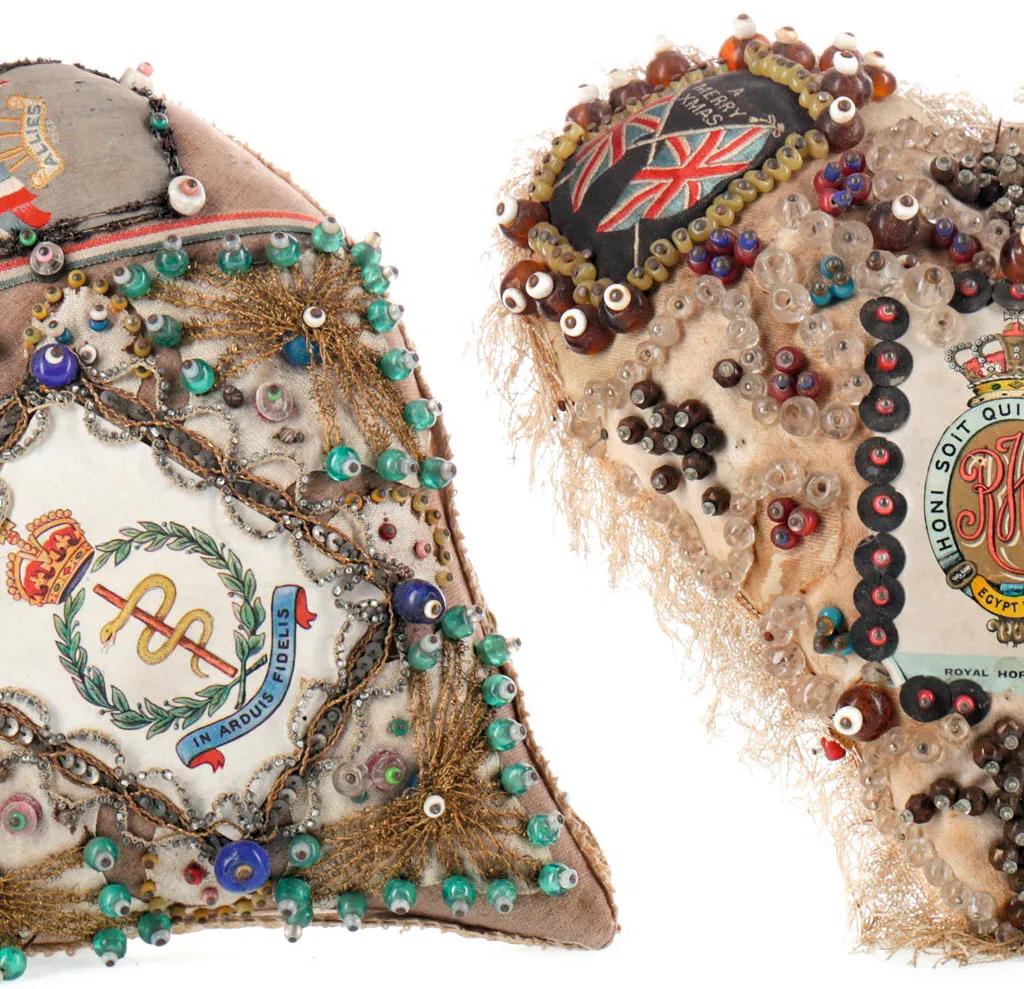No sewing box is complete without a pincushion. This simple tool spans folk art and high fashion, from humble pincushions made from fabric scraps to luxury models by top silversmiths. Robert Bush, a dealer in antique silver, explains what makes them so collectable: ‘Sometimes people are collectors of sewing tools, or they collect the work of the innovative silversmith Sampson Mordan, who invented the first self-propelling pencil and patented other clever new items, including pincushions. But lots of collectors are just passionate about pincushions. They’re small, tactile and have loads of personality. And unlike guitars or vintage cars, you can fit quite a big collection nicely on the single shelf of a cabinet.’
The history of pincushions is tied closely to the history of pins. In Charlotte Brontë’s Jane Eyre, young Jane laments that the powers that be at Lowood School have falsely economised in purchasing bad needles, which spoil the fabric. Until the advent of mass production in the mid 19th century, quality needles and pins were expensive. Pins were even more laborious to produce than needles, as the pinheads needed to be fixed tightly to the shanks, adding to their costliness.
Mechanisation made pins cheap and plentiful and in turn led to larger-scale commercial production of pincushions. In her book, Needlework and Embroidery Tools, Eleanor Johnson describes how pedlars took pincushions made of wood, bone and base metals to even the remotest rural communities, while smart shopkeepers offered pricier pincushions wrought in materials like rosewood, ivory or silver.

Many women used their skill and ingenuity to make their own pincushions. Peggy McClard, an American antiques dealer specialising in folk art, particularly loves these homemade pieces: ‘Women were using all their creativity and making things from what they had – and they often didn’t have much, maybe just scraps of fabric cut down from worn-out clothes. They took something ordinary and decorated it in any way they wanted, turning it into something personal and beautiful.’
Peggy is also fond of the ‘make-do’ pincushions of the 19th century, which repurposed broken household objects: ‘From the 1850s, American ladies’ magazines included ideas and patterns for make-dos,’ she explains. ‘We see the bases of broken glasses and oil and spirit lamps being turned into pincushions, for example. During the American Civil War, all production was focused on the war, and the ports were closed. Even after the war, fabrics and other household goods were still scarce. So these were precious objects that weren’t just going to be thrown away when they were broken. The women did something really creative out of necessity.’

In both the UK and the US, even before the mechanisation of pin-making, layette pincushions were sometimes given to celebrate the birth of a baby. They might pick out the newborn’s initials or year of birth in pinheads or, much like a modern greetings card, add a message like ‘Welcome Sweet Babe’.
Peggy explains that layette cushions also had a practical purpose: ‘We don’t come across layette cushions very frequently, possibly because women actually used the pins. There was an old wives’ tale that pins caused pain in childbirth, so traditionally all pins were removed from a woman’s home until after her baby was born, making these layette pillows an important and timely gift for the newborn.’ Horrifying though it sounds to modern parents, until the invention of the safety pin in the mid 19th century, ordinary pins were used to fasten babies’ cloth nappies and so a supply of pins was essential to new mothers.
From the late 1800s, the profusion of high-quality pins led to a craze for sentimental pincushion making. Bedecked with ribbons, glass-topped pins, sequins, buttons and other fancy haberdashery, heart-shaped cushions were given as personal mementos. Some of the most touching examples date from the First World War. Often made by wounded soldiers, they were worked in regimental colours as a gift for their sweethearts, or to commemorate fallen friends.
Around the start of the 20th century, commercially minded silversmiths like S. Mordan & Co, Saunders & Shepherd and Adie & Lovekin launched ranges of novelty pincushions, many modelled as birds and animals. ‘They were made over quite a short period of time, from the 1890s to the 1910s,’ explains dealer Robert Bush. ‘But they were made in so many different forms, people get real pleasure from collecting them.’
These silver creatures were usually offered in a range of sizes, most just a few centimetres tall. Savvy manufacturers also sought to catch buyers’ eyes with inanimate objects cleverly rendered in miniature as pincushions, like canoes, shoes, pianos – even new-fangled rollerskates.

Advertisements placed in ladies’ magazines touted silver pincushions as perfect gifts. Chicks were retailed by S. Mordan & Co as charming Easter novelties – ‘just the very thing to surprise and delight your friends’. Even the grandest occasions were worthy of a pincushion. To mark the coronations of Edward VII and George V, silversmiths manufactured tiny thrones – replicas of the coronation chair in Westminster Abbey.
Robert says he encounters pigs, chicks, swans and elephants most frequently. Each was loaded with symbolic meaning. We still associate chicks with new life, swans with grace and elephants with ‘never forgetting’. Nowadays pigs might seem an unusual choice but, at the time they were made, these animals were popular lucky charms. Robert is also fascinated by some of the more unusual examples. ‘It’s interesting to speculate who owned a pincushion modelled as a snooker table. It seems an unusual choice for an Edwardian lady,’ he says. ‘Or a peaked military cap. What’s the connection?’
Collectors are keen to seek out the rarest models, pushing exceptional pieces in good condition over £1,000, whereas the more widely available pincushions may ask around £200. Signs of age and use generally add to the charm of folk pieces, but condition matters more in silver pincushions. The tiny velvet pin pads are sometimes worn, or have been replaced, which impacts value, as do significant splits and dents. ‘There are lots of modern silver pincushions about now, mass-produced overseas,’ cautions Robert. ‘But they’re easy to spot as they’re not hallmarked. A hallmark guarantees quality, and tells you exactly who made it, when, and where.’

Perhaps you’re drawn to a humble ‘make-do’ pincushion, upcycled from a broken glass goblet, or charmed by a tiny silver camel. Either way, these items provoke intriguing questions about the lives of generations past, and make for a delightful collection.
Where to buy antique and vintage pincushions
McClard Segotta Antiques
Folk art and Americana, including pincushions. mcclardsegotta.com
Robert Bush Antiques
Antiques dealer with more than 40 years’ experience in silver and collectables. robertbushantiques.co.uk
Steppes Hill Farm Antiques
Antiques store specialising in small silver collectors’ items. steppeshillfarmantiques.com
Julie Cartwright Antiques
Specialist in antique silver including sewing items. juliecartwrightantiques.co.uk
